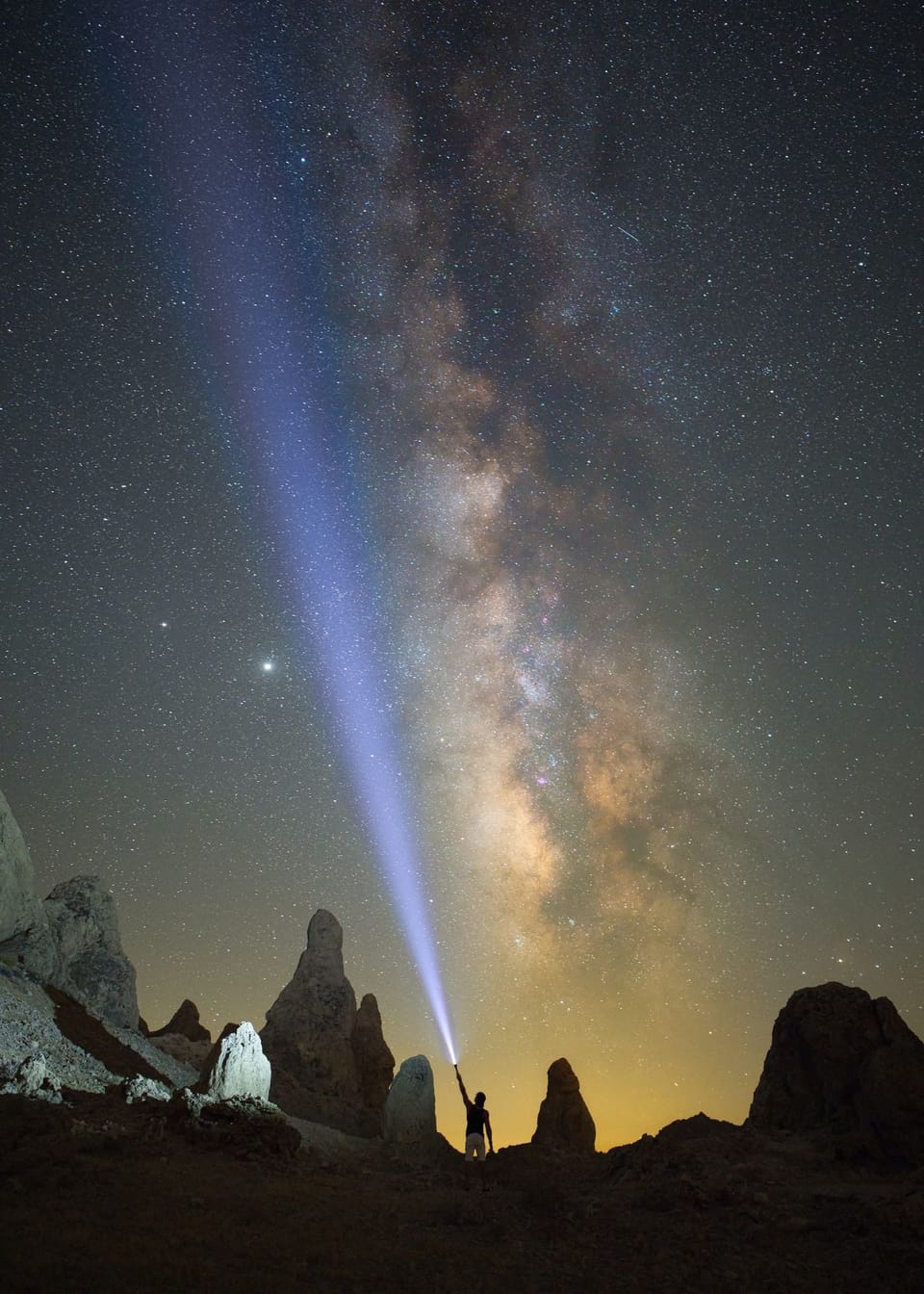Green Alien Planet: Learn The Reason Why Night Vision Goggles Are Green
Night Vision Goggles were invented during WWII. Now, they have become the gold standard for pitch black illumination for both military & hunters.

Ever asked yourself why night vision goggles are green?
Not only does the color green help make it easier to see in darkness, but there’s more to this shady story!
Night vision technology has come a long way since its invention back in World War II. While white and black images used to be the standard, now you can find high-tech gadgets that produce eerie green light. They give your view of the world an alien marvel that everyone will envy!
Check out our selection of night vision goggles today and don't miss out on a fascinating experience like no other!



What Are Night Vision Goggles
Night vision goggles are electronic devices that allow the wearer to see better in the dark. They offer a hands-free alternative to other night vision equipment.
While consumer-grade products are available, night vision goggles are often used in military or law enforcement settings. These tend to be very expensive and top-of-the-line models can cost thousands of dollars.
Night vision goggles (sometimes called NVGs) don’t usually have magnification, so the image distance you see is similar to what it would be to your unaided eyes.
They cover both eyes and give the wearer better depth perception than a camera or a device with a single eyepiece.
Why Are Night Vision Goggles Green
Image enhancement works being able to detect low levels of light and then amplify it. When photons, the tiny particle that makes up light, enter an image enhancer they first hit a special layer called a photocathode which releases electrons.
These electrons then hit a second layer called a micro-channel plate which multiplies the electrons before they hit the phosphor screen. Well, that then converts them back into the light because there are now so many more electrons you get a brighter image.
Instead of detecting light thermal cameras detect heat that comes off of a different object since they can see infrared light.
The heat causes things to emit photons in the infrared or IR spectrum and although humans can't see infrared light these special cameras take advantage of it in several different ways.
Thermal cameras often can achieve the same level of detail as their image-enhancing counterparts. They have the big advantage of being able to pick out things that might be hard to see with a normal image enhancer.
For example, a firefighter trying to locate people that need to be rescued in a burning building or a hunter picking out prey deep in the woods hiding behind foliage or cops trying to locate the hiding fugitive.
And speaking of thermal imaging, some cameras can even create their own infrared light in a process called active illumination where they are actually light up the surroundings with IR radiation.
To sum up, the big reason why night vision is green is that the screen that is used for image-intensification inside the device itself is mainly made out of phosphor.
One more important thing to remember, a night vision is green because human eye can differentiate more shades of green, than any other color.
Benefits Of Night Vision Goggles
Night Vision Goggles are an essential tool for anyone who needs to operate in low light conditions. Here are some benefits of using Night Vision Goggles:
Improved Visibility: With Night Vision Goggles, you can see in total darkness and low light conditions. This can be incredibly helpful for outdoor activities such as camping, hunting or fishing.
Enhanced Safety: Night Vision Goggles can improve safety in situations where vision is impaired. It can help identify obstacles and potential hazards, thereby reducing the risk of accidents.
Tactical Advantage: Military and law enforcement personnel can use Night Vision Goggles to gain a tactical advantage in low light conditions. It allows them to see without giving away their position.



Night Vision Terminology
Terminology
Before we dive into the technical discussion, it is important to familiarize ourselves with some common night vision terminology.
Sensitivity: defines the minimum amount of infrared light that can be detected
Gain: the ratio of visible output to the amount of infrared input; a measure of signal amplification
Noise: the output signal on the phosphor screen that is not related to the actual infrared image; noise distorts and blurs images
Photocathode: a negatively charged screen/electrode coated with photosensitive material; absorbs infrared light to produce electrons
MCP: a micro-channel plate; used in amplification of photoelectrons
Anode: a positively charge electrode; accelerates electrons toward the phosphor screen
Phosphor screen: this absorbs electrons generated by the photocathode and produces the visible-light image, which corresponds to the original infrared image
ITAR: the “International Traffic in Arms Regulations” the regulates the export and sale of certain controlled technologies outside of the United States
Active devices: night vision devices that use infrared (IR) illuminators to cast additional or supplemental light on targets for imaging
Passive devices: night vision devices that use natural infrared illumination for imaging
What Are Infrared Illuminators
Because digital and intensifier tube night vision devices are passive devices and use natural ambient infrared light from the Moon and the stars to create an image, they will not work effectively on cloudy nights or in the total darkness of a basement or blacked-out building.
To gain visibility, improve sensitivity and range in total darkness, many NVDs come with a built-in infrared illuminator or have a mounting point for an optional illuminator of your choice. Theoretically, any source of infrared light could serve as an infrared (IR) illuminator for your night vision device: infrared lamps, infrared LED flashlights, and infrared lasers.
Because LED and laser technologies are more widely affordable on the consumer market, infrared lamps are less common today. The vast majority of commercially available dedicated night vision illuminators use eye-safe lasers or LED sources.
What Is Thermal Imaging
The last and the most sophisticated technology in the category of night vision is thermal vision or thermal imaging. Thermal imagers are unique in many aspects, but what sets them apart is that they do not detect reflected ambient near—and short-wave infrared light (SWIR), but rather detect heat (long-wave infrared light, or LWIR) emitted by objects.
Any object with a temperature above absolute zero degrees Kelvin emits long-wave infrared light (heat). The warmer the object is, the more infrared it radiates and the more detectable it is with thermal imaging. To do this, thermal imagers use very sophisticated detectors—bolometers—that are also sometimes referred to as focal plane arrays (FPA).
They read the difference in temperature between an object and its background to create a thermal profile of the scene, which is then shown on an electronic display. Thermal imagers usually use germanium optics, which are opaque to visible or near-infrared light and will not detect it.
Night Vision Goggle FAQs
Seeing in the dark has always been an uphill battle.
Trying to navigate a dark environment with no vision is a recipe for disaster, but carrying around bulky night vision goggles isn't exactly stylish either.
Make night-time navigation a breeze with Night Vision Goggles. These high-tech specs are lightweight and offer near-perfect vision in even the darkest of environments.
How do night vision goggles use image intensification technology?
Image intensification is a technology that amplifies the available light, making it easier to see in low-light or dark conditions. Night vision goggles use this technology to capture and amplify very small amounts of light.
The goggles have an objective lens that captures the available light and a photocathode that converts photons into electrons. These electrons are then accelerated through an electric field and strike a phosphor screen, which produces the visible image seen through the eyepiece.
Can night vision goggles see in complete darkness?
Although night vision goggles can provide enhanced visibility in low-light conditions, they are not able to see in complete darkness. This is because they rely on small amounts of ambient light to operate.
However, some night vision goggles incorporate infrared illuminators, which emit invisible infrared light, to provide additional illumination in complete darkness.
What are the types of night vision goggle technology?
There are several types of night vision goggle technology, including image intensification, thermal imaging, and active illumination. Image intensification, as described above, amplifies available light to produce a visible image.
Thermal imaging detects infrared radiation emitted by objects to produce an image based on temperature differences. Active illumination emits its light source, such as infrared or laser radiation, to illuminate the scene being viewed.
Night vision goggles are a valuable tool that provides users with the ability to see in low light conditions, providing an important tactical advantage in various activities such as hunting, law enforcement, or military operations.
The benefits of night vision goggles include improved visibility in low-light conditions, enhanced safety when obstacles or potential hazards are challenging to see, and tactical advantage that can support various missions.
By investing in a high-quality pair of night vision goggles, you can have an increased level of confidence in your ability to navigate and operate in various low-light environments.
We've done the research so you don't have to! To browse our Top Picks for Best Night Vision Goggles please click the link below!

Your Friends,
LoveNatureReviews Team





